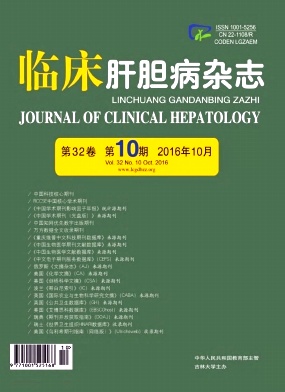|
[1]FINN RS.Current and future treatment strategies for patients with advanced hepatocellular carcinoma:role of m TOR inhibition[J].Liver Cancer,2012,1(3-4):247-256.
|
|
[2]LLOVET JM,RICCI S,MAZZAFERRO V,et al.Sorafenib in advanced hepatocellular carcinoma[J].N Engl J Med,2008,359(4):378-390.
|
|
[3]SALEM R,HUNTER RD.Yttrium-90 microspheres for the treatment of hepatocellular carcinoma:a review[J].Int J Radiat Oncol Biol Phys,2006,66(2 Suppl):s83-s88.
|
|
[4]PENG S,YANG QX,ZHANG T,et al.Lobaplatin-TACE combined with radioactive125I seed implantation for treatment of primary hepatocellular carcinoma[J].Asian Pac J Cancer Prev,2014,15(13):5155-5160.
|
|
[5]LIN ZY,CHEN J,DENG XF.Treatment of hepatocellular carcinoma adjacent to large blood vessels using 1.5T MRI-guided percutaneous radiofrequency ablation combined with iodine-125 radioactive seed implantation[J].Eur J Radiol,2012,81(11):3079-3083.
|
|
[6]LUO JJ,ZHANG ZH,LIU QX,et al.Endovascular brachytherapy combined with stent placement and TACE for treatment of HCC with main portal vein tumor thrombus[J].Hepatol Int,2016,10(1):185-195.
|
|
[7]MA JX,JIN ZD,SI PR,et al.Continuous and low-energy125I seed irradiation changes DNA methyltransferases expression patterns and inhibits pancreatic cancer tumor growth[J].J Exp Clin Cancer Res,2011,30(1):35.
|
|
[8]CHEN H,BAO Y,YU L,et al.Comparison of cellular damage response to low-dose-rate125I seed irradiation and high-doserate gamma irradiation in human lung cancer cells[J].Brachytherapy,2012,11(2):149-156.
|
|
[9]TAKABAYASHI K,KASHIWAGI K,KAWATA T,et al.Continuous low-dose irradiation by I-125 seeds induces apoptosis of gastric cancer cells regardless of histological origin[J].Cancer Biol Ther,2014,15(1):81-88.
|
|
[10]CAI SD,ZHENG GJ.Radioactive particle therapy of thoracic tumor[M].Beijing:People's Medical Publishing House,2012:4.(in Chinese)柴树德,郑广钧.胸部肿瘤放射性粒子治疗学[M].北京:人民卫生出版社,2012:4.
|
|
[11] WANG J.Radioactive seeds treatment of abdominal tumor[M].Beijing:People's Medical Publishing House,2014:5.(in Chinese)王娟.腹部肿瘤放射性粒子治疗技术[M].北京:人民卫生出版社,2014:5.
|
|
[12]GLAJCHEN N,SHAPIRO RD,STOCK RG,et al.CT findings after laparoscopic pelvic lymph node dissection and transperineal radioactive seed implantation for prostatic carcinoma[J].AJR Am J Roentgenol,1996,166(5):1165-1168.
|
|
[13]JOHNSON M,COLONIAS A,PARDA D,et al.Dosimetric and technical aspects of intraoperative I-125 brachytherapy for stage I non-small cell lung cancer[J].Phys Med Biol,2007,52(5):1237-1245.
|
|
[14]LIU K,JI B,ZHANG W,et al.Comparison of iodine-125 seed implantation and pancreaticoduodenectomy in the treatment of pancreatic cancer[J].Int J Med Sci,2014,11(9):893-896.
|
|
[15]JIANG YL,MENG N,WANG JJ,et al.CT-guided iodine-125seed permanent implantation for recurrent head and neck cancers[J].Radiat Oncol,2010,5(4):286-290.
|
|
[16]WANG JJ,YUAN HS,LI JN,et al.Interstitial permanent implantation of125I seeds as salvage therapy for re-recurrent rectal carcinoma[J].Int J Colorectal Dis,2009,24(4):391-399.
|
|
[17]WANG J,WANG J,LIAO A,et al.The direct biologic effects of radioactive125I seeds on pancreatic cancer cells PANC-1,at continuous low-dose rates[J].Cancer Biother Radiopharm,2009,24(4):409-416.
|
|
[18]LIAO A,WANG J,WANG J,et al.Relative biological effectiveness and cell-killing efficacy of continuous low-dose-rate125I seeds on prostate carcinoma cells in vitro[J].Integr Cancer Ther,2010,9(1):59-65.
|
|
[19]LIU J,WANG H,QU A,et al.Combined effects of C225 and 125-iodine seed radiation on colorectal cancer cells[J].Radiat Oncol,2013,8(1):219.
|
|
[20]WANG H,LI J,QU A,et al.The different biological effects of single,fractionated and continuous low dose rate irradiation on CL187colorectal cancer cells[J].Radiat Oncol,2013,8(1):196.
|
|
[21]QIN Q H,HUANG BS,TAN QX,et al.Radiobiological effect induced by different activities of(125)I seed brachytherapy in a hepatocellular carcinoma model[J].Int J Clin Exp Med,2014,7(12):5260-5267.
|
|
[22]STRZALKA W,ZIEMIENOWICZ A.Proliferating cell nuclear antigen(PCNA):a key factor in DNA replication and cell cycle regulation[J].Ann Bot,2011,107(7):1127-1140.
|
|
[23]SU CH.Survivin in survival of hepatocellular carcinoma[J].Cancer Lett,2016,379(2):184-190.
|
|
[24]CHINH CHUNG D,THANH LONG L,NGHIA SON H,et al.Downregulation of vascular endothelial growth factor enhances chemosensitivity by induction of apoptosis in hepatocellular carcinoma cells[J].Cell J,2015,17(2):273-287.
|









 本站查看
本站查看




 DownLoad:
DownLoad: